This website uses cookies so that we can provide you with the best user experience possible. Cookie information is stored in your browser and performs functions such as recognising you when you return to our website and helping our team to understand which sections of the website you find most interesting and useful.
Category: Safety
-
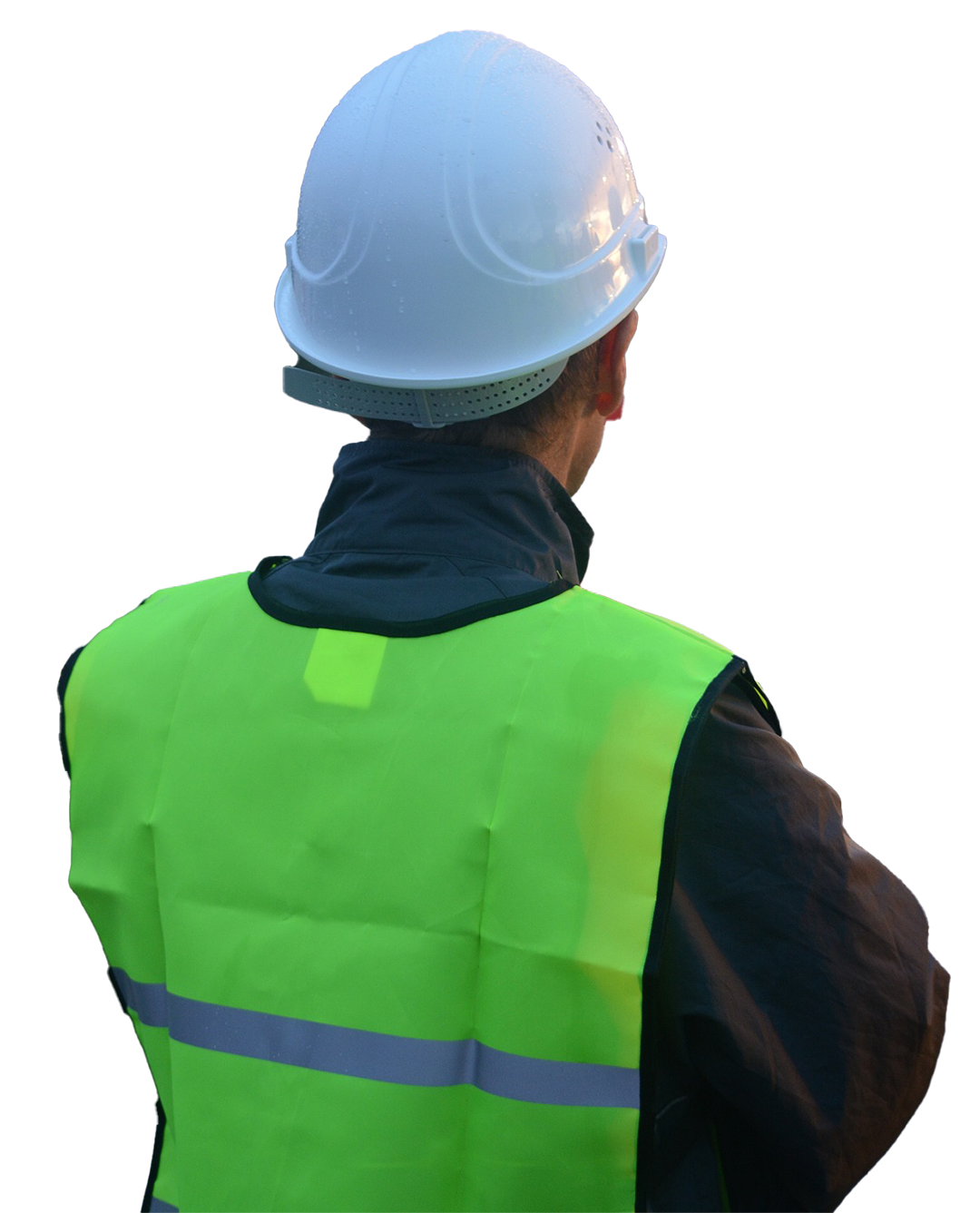
Point of Work Risk Assessment (POWRA): Why It Matters and How to Do It Right
Introduction Workplace safety is not just about compliance; it is about protecting lives. A formal risk assessment provides an overview of hazards for a task, but it does not always account for real-time, on-site conditions that workers face daily. A Point of Work Risk Assessment (POWRA) is a dynamic safety check carried out before starting…
-
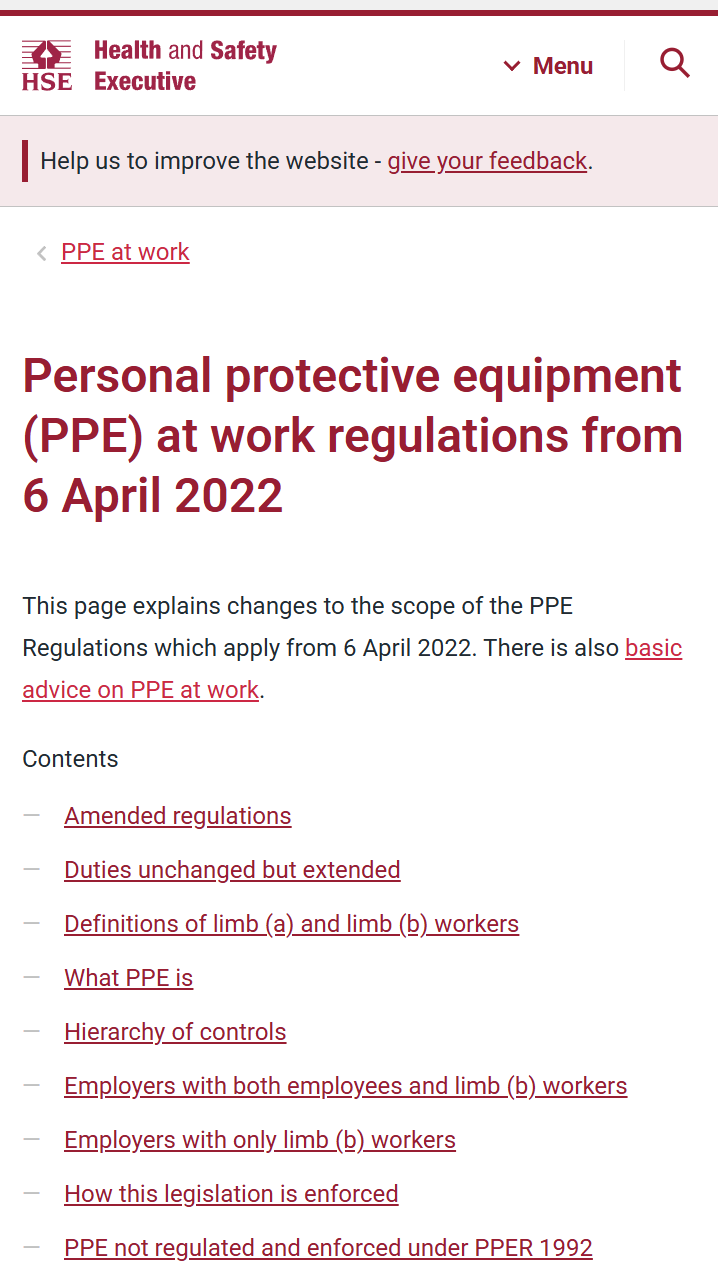
The Big Six: Essential PPE for Workplace Safety & Compliance
1. Head Protection: Safety Helmets & Hard Hats (BS EN 397 & BS EN 50365) Why Is Head Protection Important? Construction sites and industrial workplaces present a high risk of head injuries due to falling debris, low-hanging objects, and accidental impacts. Wearing the correct head protection reduces the severity of injuries and ensures compliance with…
-
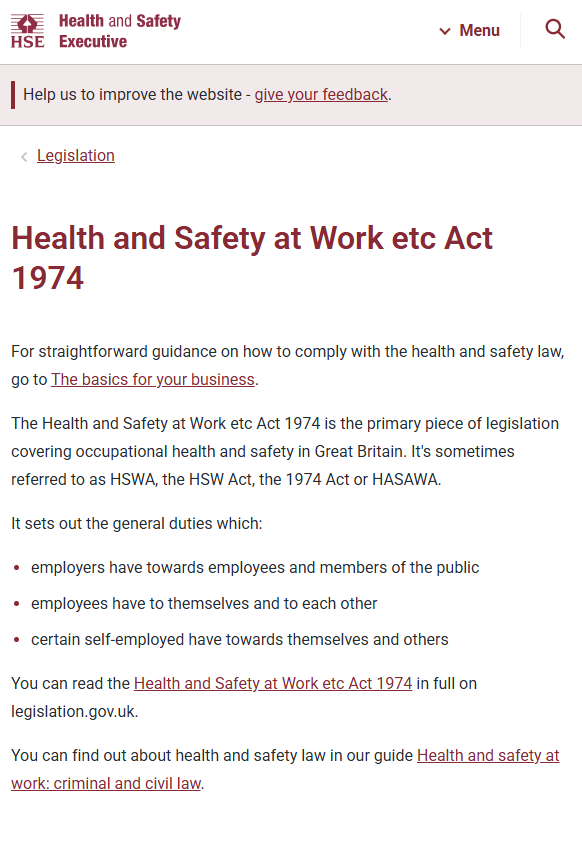
The Health and Safety at Work Act: What You Need to Know
Related Link – Health and Safety at Work etc Act 1974 – HSE HSWA Real World If you’ve ever groaned at the mention of “health and safety,” you’re not alone. But here’s the reality: the Health and Safety at Work Act 1974 (HSWA) is the reason countless workers go home safe at the end of…
-
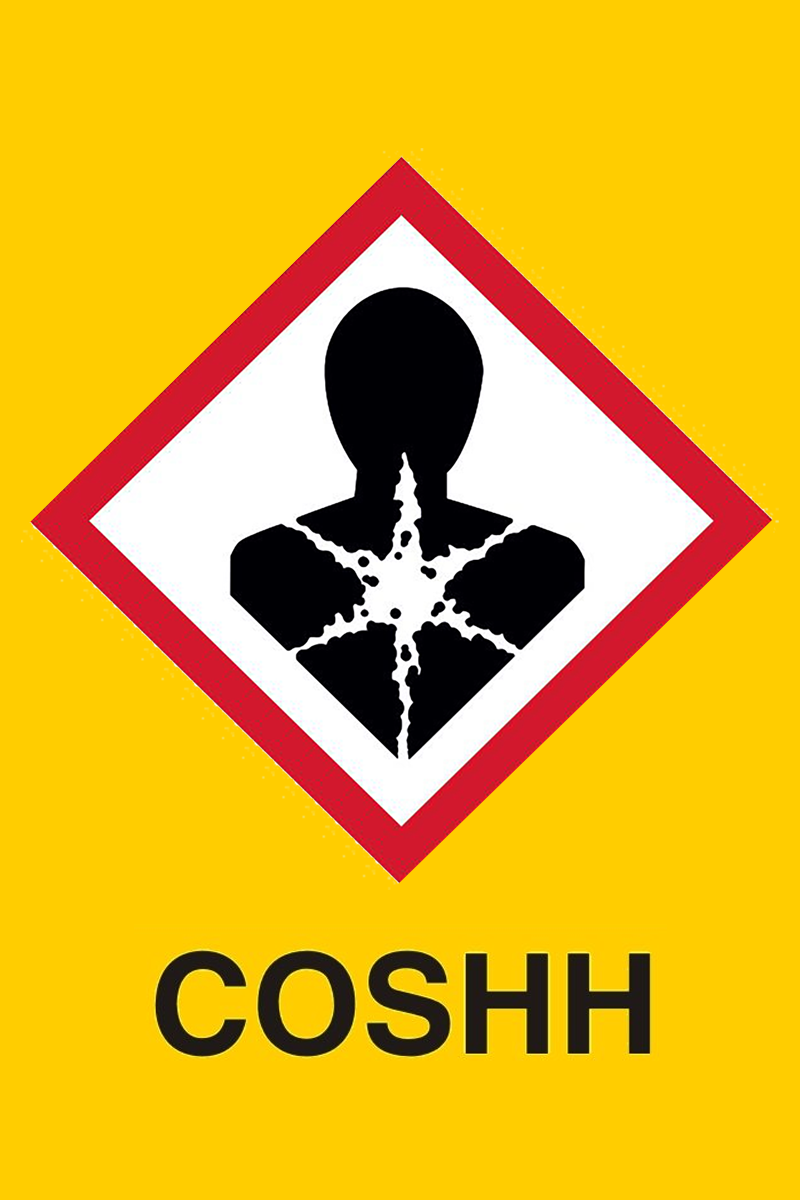
COSHH Regulations: Key Clauses & Workplace Compliance
What is COSHH and Why Does It Matter? The Control of Substances Hazardous to Health (COSHH) Regulations 2002 are designed to protect workers from exposure to hazardous substances in the workplace. These regulations apply to industries such as construction, healthcare, manufacturing, and cleaning services, where chemicals, dust, fumes, or biological agents are regularly encountered. Failure…
-
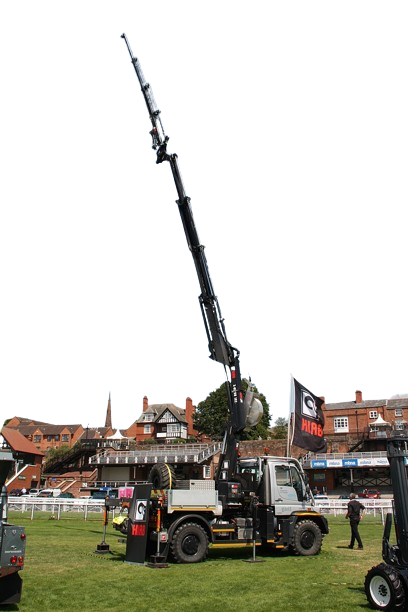
Safety Considerations for Lifting Operations, Work at Height, and Vehicle Handling
Prepere, do the heavy lifting. And do it right. Safety is critical when conducting lifting operations, working at height, or managing vehicle loading and unloading. This post provides an overview of important guidelines and documents to consider. While not exhaustive, it highlights key safety measures and resources to support effective preparation and execution. HH 01…
-

Site Manager Responsibilities According to HSE
Safe site, safe staff. Site managers play a critical role in maintaining health, safety, and welfare standards on construction sites. These responsibilities aren’t just good practice—they are legal requirements under key regulations such as the Health and Safety at Work etc. Act 1974 (HSWA), Construction (Design and Management) Regulations 2015 (CDM 2015), and the Workplace…
-
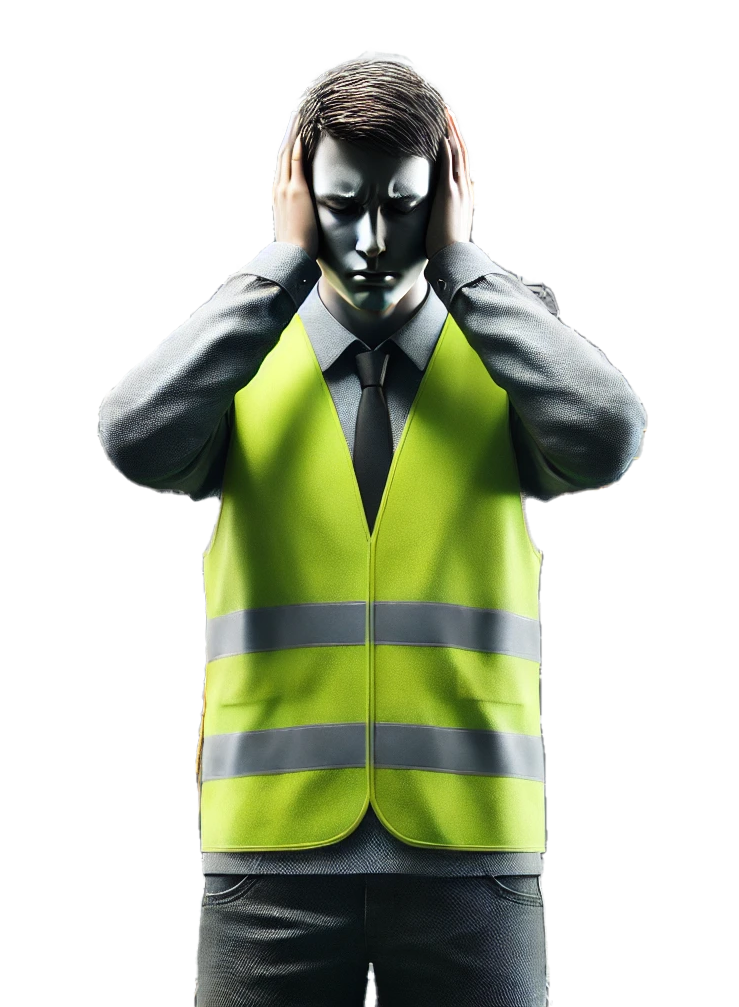
Hearing Protection: Controlling Noise At Work
Noise is debilitative. Fact, so lets protect people. In environments where noise levels exceed safe thresholds, hearing protection is not just a recommendation—it’s a necessity. Understanding the regulations, tests, and best practices is essential to ensure compliance and safeguard workers’ hearing. This article outlines key standards, practical measures, and the steps to take when sound…
-
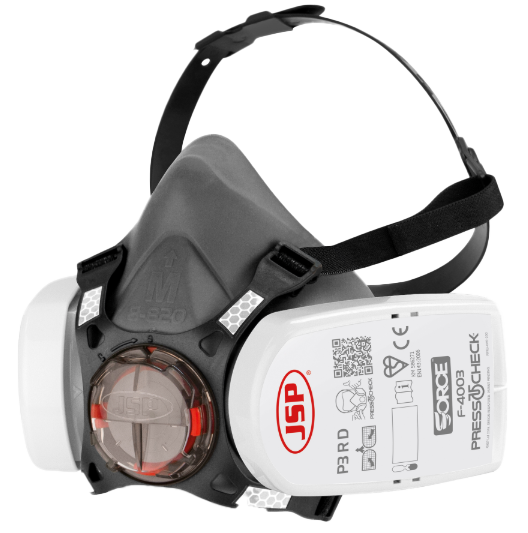
Face-Fit Tested Dust Masks: Choosing the Right Protection for Concrete Drilling
Drilling concrete is a common task in construction, but it poses serious risks due to respirable crystalline silica (RCS). Prolonged exposure to silica dust can lead to severe diseases like silicosis, lung cancer, and COPD. Selecting the correct mask, testing its fit, and adhering to the latest regulations are essential for ensuring safety. This guide…
-
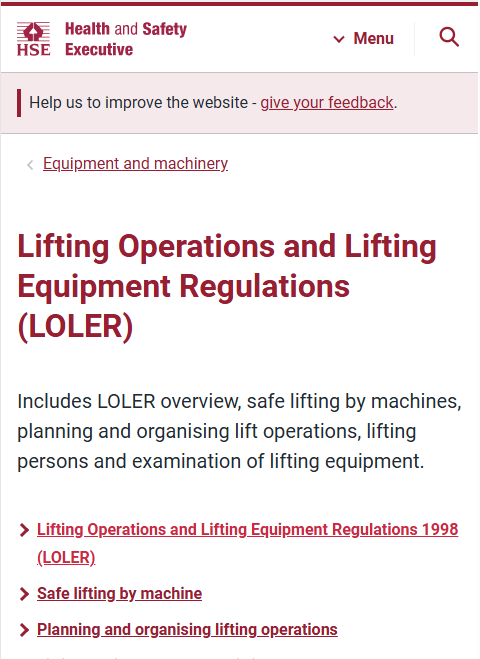
Understanding the Role of a Competent Person Under LOLER
The Lifting Operations and Lifting Equipment Regulations 1998 (LOLER) play a crucial role in ensuring the safe use of lifting equipment in the workplace. Central to these regulations is the requirement for a competent person to thoroughly examine lifting equipment, ensuring its safety and identifying potential hazards. But what defines a competent person, and what…
-
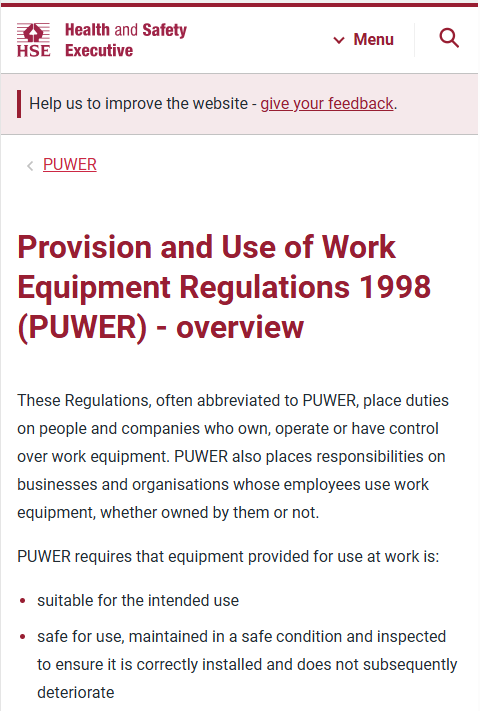
What Is PUWER and Why Is It Essential for Your Business?
Keeping your staff and fellow workers safe. If your business uses any kind of work equipment—from machinery and tools to office devices—you need to be familiar with PUWER. The Provision and Use of Work Equipment Regulations 1998 (PUWER) is a key piece of UK legislation designed to ensure that equipment is safe to use, properly…
